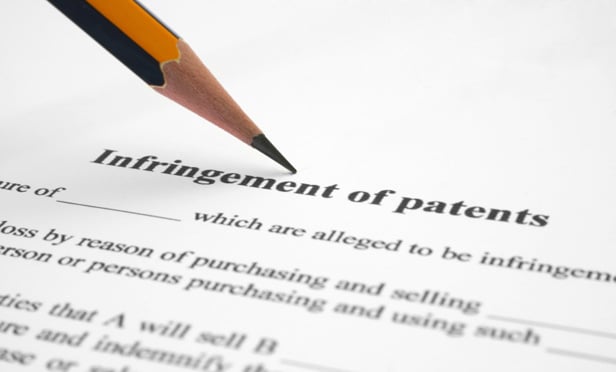Features

Walking the Fine Line of Fair Use: The Second Circuit's Decision in <i>Fox News v. TVEyes</i>
Only a small fraction of television news broadcasts are made available online. For a party to monitor and view all news coverage of an event, it would essentially have to watch and record all news broadcasts 24/7. That's exactly what media-monitoring service TVEyes did. There was no dispute that TVEyes had copied Fox News's content. Instead, the issue was whether TVEyes's service constituted fair use.
Features

The Ripple Effect of Rejecting Trademark Licenses
<b><i>The First Circuit Widens the Controversy</b></i><p>In <i>In re Tempnology</i>, the First Circuit held that the debtor's rejection of a trademark license strips the nondebtor licensee of any right to continue to use the trademarks. In so doing, the court takes the same approach as the Fourth Circuit and rejects the approaches advocated by the Third and Seventh Circuits.
Features

A Reasonable Royalty Rate Must Be Tied to Facts
<b><i>Exmark Manufacturing Company Inc. v. Briggs & Stratton Power Products Group, LLC</b></i><p>The rate of the reasonable royalty awarded to a successful patent plaintiff must be based on the facts of the case. A damages expert cannot merely pay lip service to the <i>Georgia-Pacific</i> factors and then “pluck” a royalty rate from thin air.
Features

How Ticket Software Lost Trade Secret Protection
Trade secret protection applies only to confidential information. In almost all circumstances, broadcasting to the world the intricate details and applications of a trade secret extinguishes whatever “property right” an entertainment industry holder once possessed. What is a sufficient method of contractually notifying a software user of the trade secret status of certain information is a closer question.
Columns & Departments

IP News
Claim Preclusion Requires Analysis that Claims in Newly Asserted Patents are Patently Indistinct from Claims in Previously Adjudicated Patents<br>Claim Elements Taught by Prior Art for Purposes of Novelty and Obviousness are not Necessarily 'Well-Understood, Routine, and Conventional' Under §101
Features

How Ticket Software Lost Trade Secret Protection
According to a recent case from the U.S. District Court for the Southern District of New York involving live-event ticket sales, a purported holder of a trade secret cannot omit a confidentiality provision from its terms of use and then claim trade secret status afterward.
Features

Will the Supreme Court Seismically Shift the Patent Damages Landscape in <i>WesternGeco v. ION</i>?
The U.S. Supreme Court recently agreed to consider whether a patentee may recover foreign lost profits resulting from infringement of a United States patent.
Features

Even the Value of the Smallest Salable Unit Must Be Apportioned
<i><b>Finjan, Inc. v. Blue Coat Sys., Inc.</b></i><p>The Federal Circuit ruled that basing a reasonable royalty calculation on the “smallest salable unit” does not obviate the need to apportion damages to the patented contribution within that unit.
Features

Takeaways from the Swift End to <i>Waymo v. Uber</i>
The details might not be quite as dramatic as they were in <i>Waymo v. Uber</i>, but lawyers expect trade secrets to continue to be a fertile source for litigation.
Columns & Departments

IP News
Federal Circuit Vacates Noninfringement Decision Finding a Genuine Dispute as to Divided Infringement<br>Patent Trial and Appeal Board Holds Sovereign Immunity No Defense to IPR Petition Brought by Accused Infringer
Need Help?
- Prefer an IP authenticated environment? Request a transition or call 800-756-8993.
- Need other assistance? email Customer Service or call 1-877-256-2472.
MOST POPULAR STORIES
- Supreme Court Hears Arguments In Corporate Trademark Infringement Remedy Calculation CaseThe business-law issue of whether and when a corporate defendant is considered distinct from its affiliated entities emerged on December 11 at the U.S. Supreme Court, with the justices confronting whether a non-defendant’s affiliate’s revenue can be part of a judge’s calculation of the monetary remedy for the corporate defendant’s infringement of a trademark.Read More ›
- Navigating AI Risks: Best Practices for Compliance and SecurityThe most forward-thinking companies embrace AI with complete confidence because they have created governance programs that serve as guardrails for this incredible new technology. Effective governance ensures AI consistently aligns with an organization’s best interests, safeguarding against potential risks while unlocking its full potential.Read More ›
- What Will 2025 Bring for Legal TechIt’s time for our annual poll of experts on what they expect 2025 to bring in legal tech, including generative AI (of course), e-discovery, and more.Read More ›
- AIAs: A Look At the Future of AI-Related ContractsAI’s rapid market proliferation and regulatory expansion mirrors privacy’s, and businesses should model their contractual AI compliance on the successes of privacy law’s DPA and BAA.Read More ›
- The Death of SEO: How AI Is Impacting Search, PPC and CookiesTraditional keyword strategies and ranking tactics are losing ground to a more dynamic approach in which optimizing for search now means optimizing for every platform and user interaction. This evolution is appropriately being called “Search Everywhere Optimization.” The redefined SEO reflects how AI is not just changing how people find information but also how businesses need to think about visibility in an increasingly connected digital ecosystem.Read More ›
